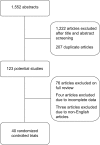Regional anesthesia to ameliorate postoperative analgesia outcomes in pediatric surgical patients: an updated systematic review of randomized controlled trials
- PMID: 30532585
- PMCID: PMC6244583
- DOI: 10.2147/LRA.S185554
Regional anesthesia to ameliorate postoperative analgesia outcomes in pediatric surgical patients: an updated systematic review of randomized controlled trials
Abstract
Regional anesthesia is becoming increasingly popular among anesthesiologists in the management of postoperative analgesia following pediatric surgery. The main objective of this review was to systematically evaluate the last 5 years of randomized controlled trials on the role of regional anesthesia techniques in alleviating postoperative pain associated with various pediatric surgical procedures. Forty studies on 2,408 pediatric patients were evaluated. The majority of the articles published from 2013 to 2017 reported that the use of regional anesthesia minimized postoperative pain and reduced opioid consumption. Only a few surgical procedures (cholecystectomy, inguinal hernia repair, and non-laparoscopic major abdominal surgery) reported no significant difference in the postoperative pain relief compared with the standard anesthetic management. The growing number of randomized controlled trials in the pediatric literature is very promising; however, additional confirmation is needed to reinforce the use of specific regional anesthesia techniques to provide optimal postoperative pain relief for a few surgical procedures (reconstructive ear surgery, chest wall deformity, hypospadias, umbilical hernia, cleft palate repair) in pediatric patients. More randomized controlled trials are needed to establish regional anesthesia as an essential component of postoperative analgesia management in children.
Keywords: pediatrics; peripheral nerve block; regional anesthesia.
Conflict of interest statement
Disclosure The authors report no conflicts of interest in this work.
Figures
References
-
- Sinatra R. Causes and consequences of inadequate management of acute pain. Pain Med. 2010;11(12):1859–1871. - PubMed
-
- Krane EJ, Weisman SJ, Walco GA. The National Opioid Epidemic and the Risk of Outpatient Opioids in Children. Pediatrics. 2018;142(2):e20181623. - PubMed
-
- Liu C, Ulualp SO. Outcomes of an Alternating Ibuprofen and Acetaminophen Regimen for Pain Relief After Tonsillectomy in Children. Ann Otol Rhinol Laryngol. 2015;124(10):777–781. - PubMed
Publication types
LinkOut - more resources
Full Text Sources


